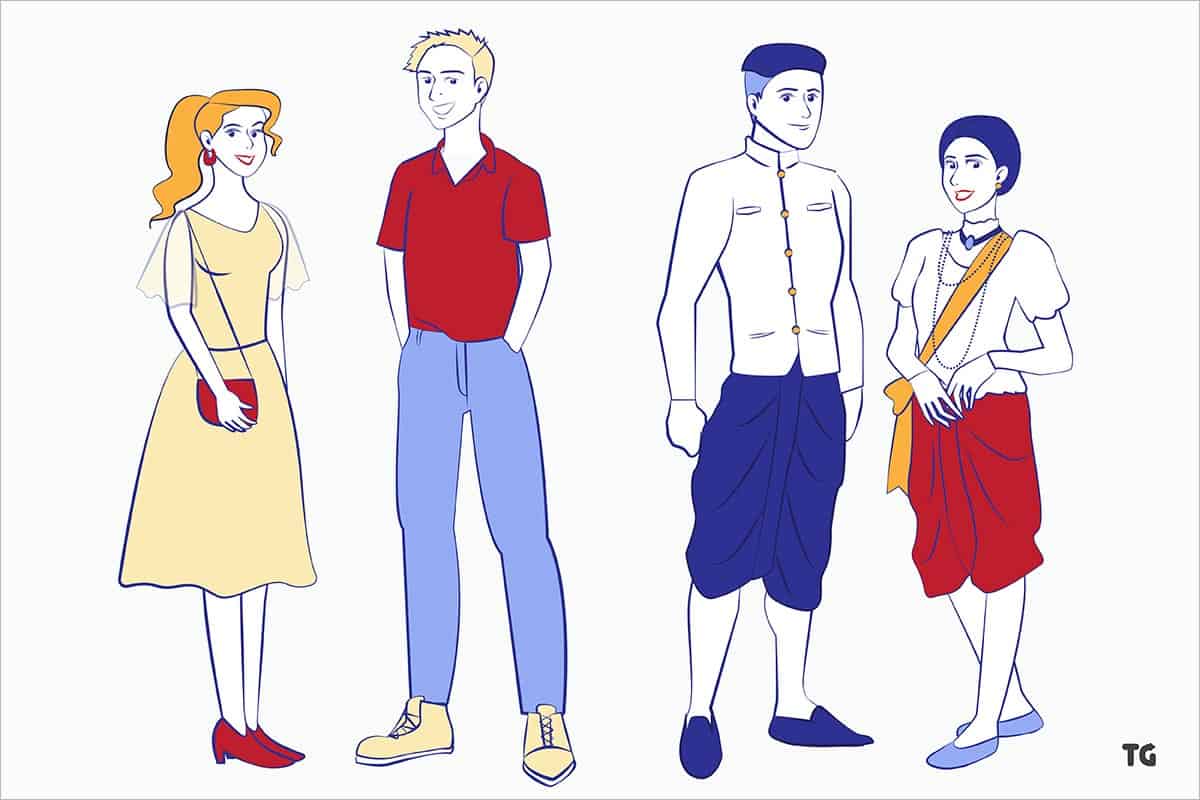Thailand is a country full of culture and tradition. Thailand is well-known for being exclusive and open to all kinds of local and international brands and clothing when it comes to fashion.
If you’re concerned about what to wear in Thailand, while there are some restrictions, there are also unlimited options of what you can wear in the country.
Thai people follow strict protocols for covering their shoulders and legs when visiting temples and religious institutions. However, when going to malls or visiting beaches, you can practically wear whatever you want. Thai people also wear their cultural clothes for specific occasions.
Let’s look into the dress code, beach essentials, and the perfect materials to wear while enjoying your time in the country. Moreover, it is essential to learn about the culture of Thailand and what both men and women wear for traditional festivities.
Is There a Dress Code on What to Wear in Thailand?
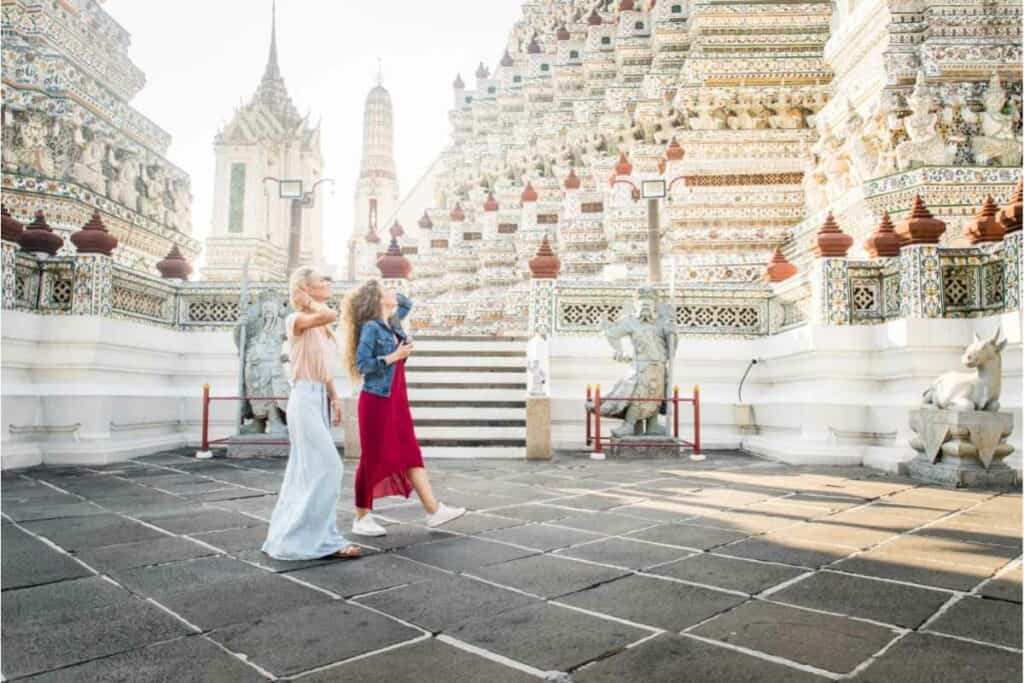
Although you will mostly see locals and international foreigners wearing whatever they want across the country, there are certain places where you need to be somewhat careful. Temples, museums, and historical locations have rather strict dress codes.
On the other hand, malls, beaches, and outdoor events do not follow strict protocols. You will get somewhat used to seeing under-dressed foreigners and locals, especially considering Thailand is a hot country. However, that doesn’t mean the government is not modest. People are rather respectful about covering up when needed (3).
When visiting Thai temples, you are expected to dress appropriately. Women should wear skirts longer than their knees or long pants (1). Moreover, long pants have to be worn by men as well. Both men and women are required to cover their shoulders as well.
What Should You Not Wear in Thailand?
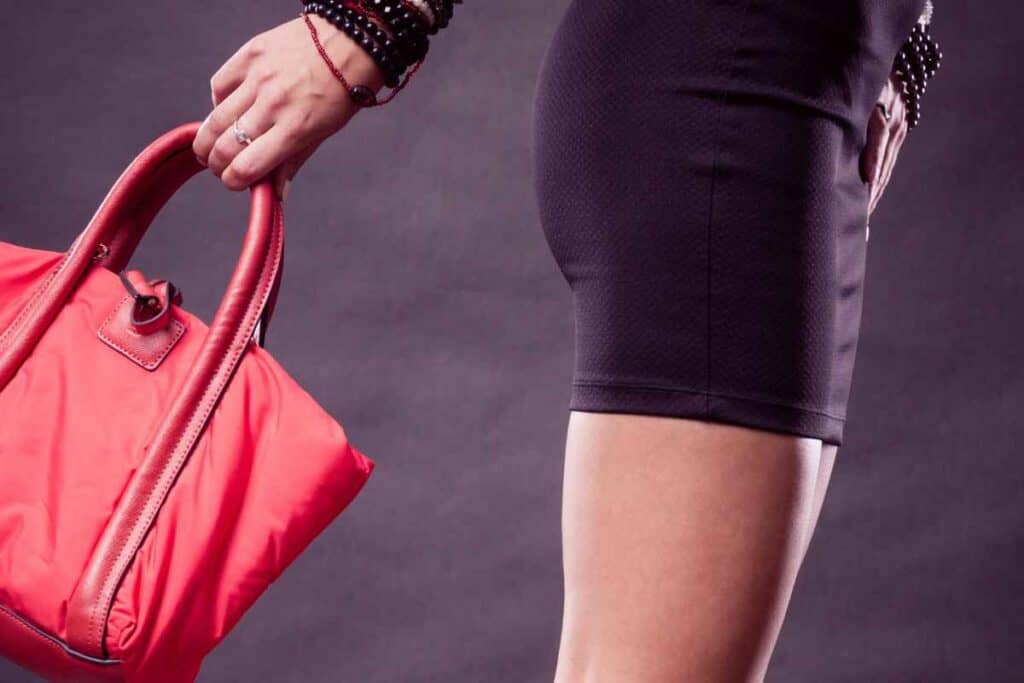
While visiting respected territories, landmarks, or institutions, you should be cautious about what you decide to wear. It is not respectful to wear tight-fitted or see-through clothing, especially when going to a religious area to pay respects or pray.
Another rule is that clothing should not be too loose or tight but convenient enough for worshippers to pay their respects at the temple (1). If you are not appropriately dressed, Thai locals often charge a fee or allow you to buy shawls that can help cover your legs and ankles (1). For this reason, you should avoid wearing shorts and skirts to the temple.
Moreover, you must also take off your shoes, hats, and sunglasses before entering the praying area. However, you can continue to wear your socks (1). Thai people do not like it when you show the bottom of your feet.
Colors:
Concerned about what colors you can wear? Check out our articles on: Can You Wear Red in Thailand? and Can You Wear Yellow Shirts in Thailand?
What to Wear at Night in Thailand

Nights in Thailand come with mosquitos and humid weather conditions. You should pack lightweight and neutral color clothing that slightly covers your body and protects you from those bites to stay protected. Women usually opt for maxi dresses that cover their legs at night, while men aim for chinos or light-weight trousers.
You will not see a casual person wearing a bikini during the night. The dark brings casual and formal attire; restaurants and romantic cuisines are open for the chance for couples to have some downtime.
What Shoes Should You Wear in Thailand?
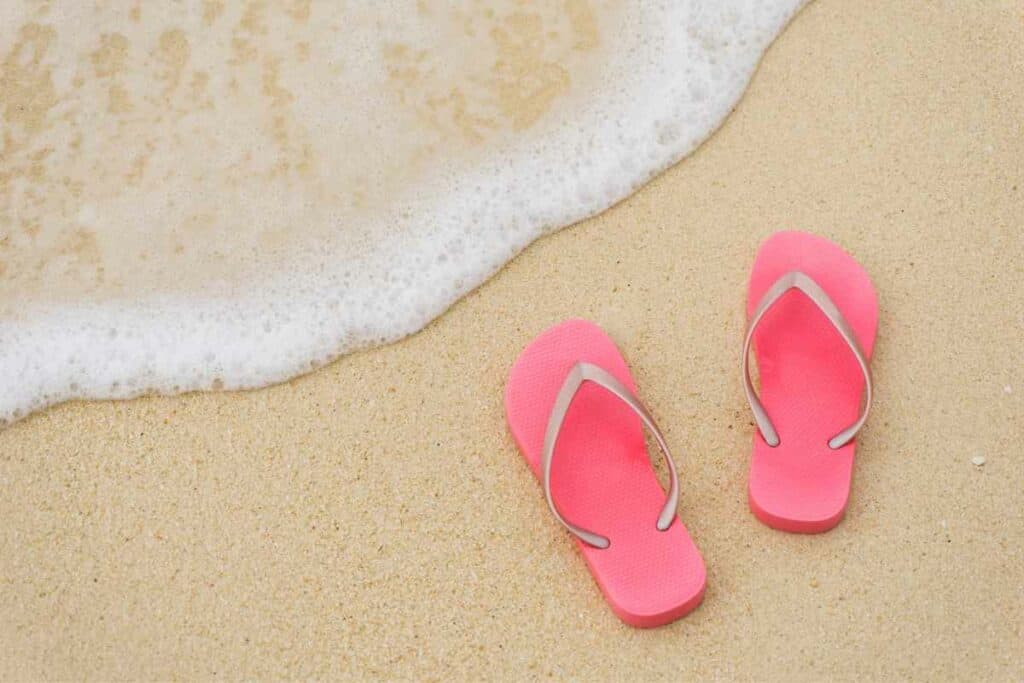
In Thailand, the most common shoes you would need are sandals and flip-flops; easy slip-on for the poolside, the beach, and outdoor activities. Moreover, you can also pack dressy shoes such as loafers, wedges, or heels for the nighttime.
Thailand is a tropical location; however, that does not mean you should only pack open shoes. Sneakers are the norm; worn with shorts and dresses, and particularly popular for tourists, you will always need a pair to keep you comfortable on your trip. Sneakers are also a fan favorite for Thailand’s popular hiking locations.
The Typical Essentials to Pack in Your Suitcase
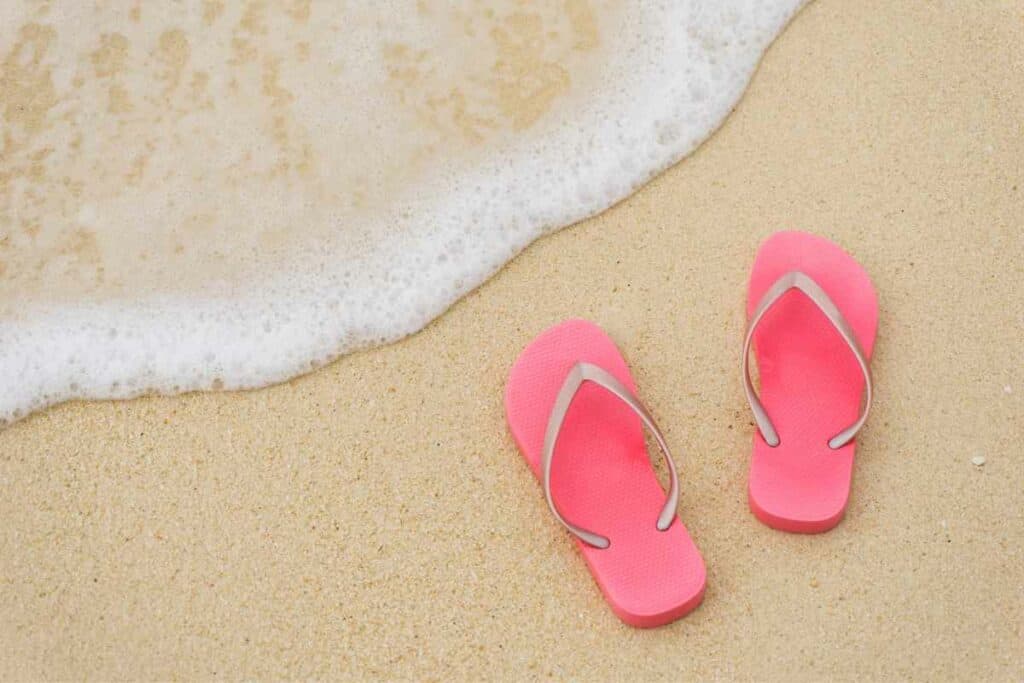
Thailand is the perfect tropical destination. This means you should always be careful when bringing in essentials that help save you from the heat on your trip.
Essentials for Hot Weather:
Here are some essential items you would need to wear while going out in the summertime: (3).
- Mosquito-repelling bracelets
- Anti-theft bag
- SPF 30 lip balm
- SPF 30 mineral primer
- Beach towel
- Waterproof case
- SPIbelt pocket
Essentials for Women:
- Maxi dress
- Rayon skirts
- Linen button-downs
- V-necks
- Jogger pants
- Leggings
- Bikinis
- Shorts
- Beach pants/traveler pants
- Hats
- Cotton tanks
- Beach cover-ups
Essentials for Men:
- Boat shoes
- Sunglasses
- Wicking polo
- Linen pants and shirts
- Teva flip-flops
- Slip-on water shoes
- UPF 50+ sun hat
- Swim trunks
Types of Materials

Linen:
Linen is the way to go when spending the day out in the sun. This is possibly the best tip you can ask for before coming to Thailand. Whether it be 100% linen or a cotton/linen blend, you will freely be able to roam around on the beach and visit the islands (3). Oversized linen shirts can be worn by both men and women-especially when you need something loose and comfortable when it’s hot. Linen doesn’t cease to amaze when it comes to pants as well. You can find comfortable men’s and women’s pants in the material (3).
Wicking and quick-drying fabrics:
Another perfect material to wear in Thailand is quick-drying fabrics. While going out and about and doing adventurous activities, everyone needs to protect their skin without needing to wear something heavy (3). Wicking fabrics mostly come in polo shirts. You can quickly test out these materials in the water and see how quickly they dry (3).
Rayon and light cotton:
Another fabric to wear in Thailand is thin cotton. Rayon is a material that is lightweight and also dressier compared to linens. However, it is not wrinkle-proof, so be careful to iron it out before wearing it to your special occasion (3).
Skin-protection fabrics:
The most crucial aspect of considering clothes in Thailand is the sun. As the country experiences the same tropical weather all year round, it is important never to burn yourself out and be protected when going outside (3). You can do this by wearing SPF 30, carrying a hat along, or wearing UPF (ultraviolet protection factor) clothing such as shirts and pants when going in the water (3).
Materials not to wear:
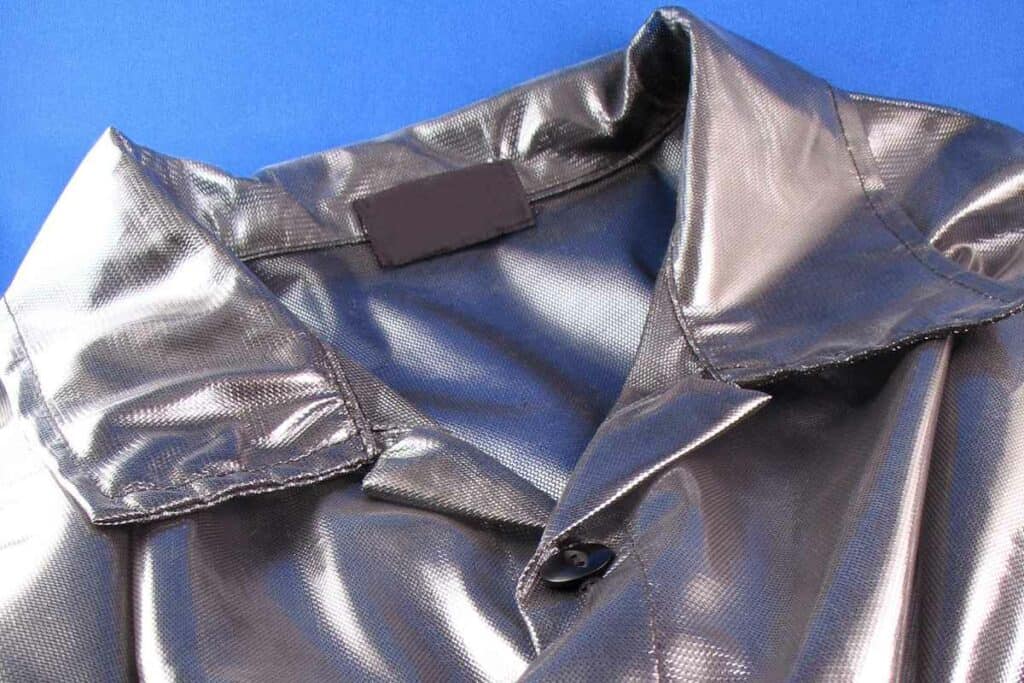
You should not go for anything lined with polyester, which will melt you to the core. Bring loose clothing rather than relying on tight-fit jeans and uncomfortable options (3).
How to Dress Like a Local: Thai Traditional Clothes
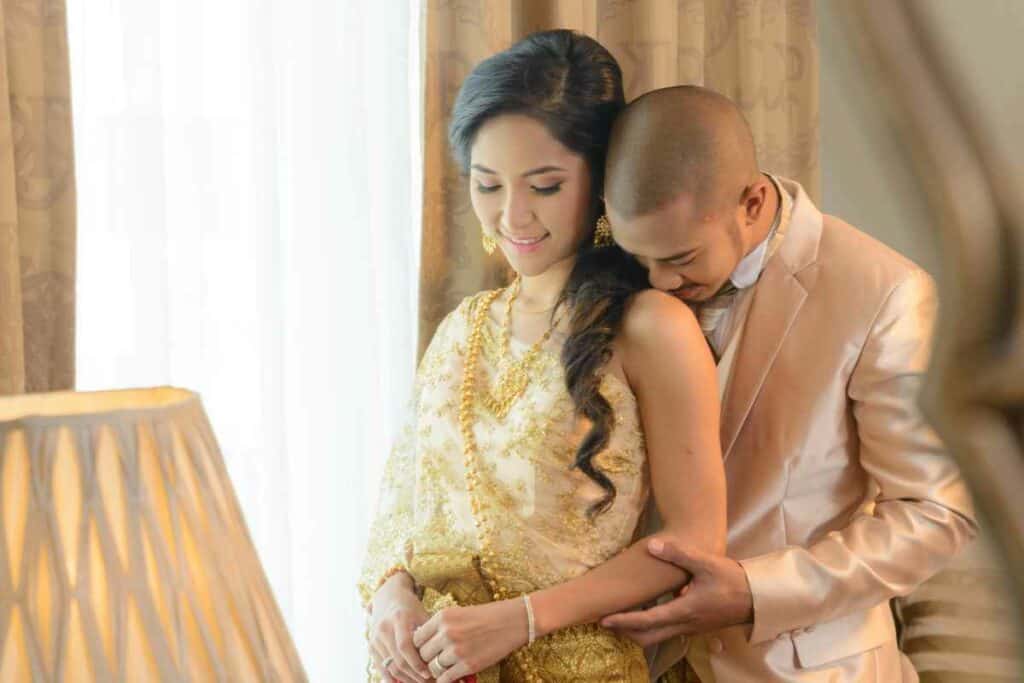
We tend to wear the same clothes all year round, so why not change things up while you are away from home? When visiting Thailand, it is an opportunity to immerse yourself in local customs and learn about culture and religion. This includes wearing Thai traditional clothing. Here are some options for you to try:
Traditional Thai Clothes for Men:
- Suea Phraratchathan: “Royalty-bestowed shirt” was invented in 1979 for the rulers of the country. The shirt comes in long-sleeves and short-sleeves (2).
- Chut Thai: Known as a Raj Pattern costume, which includes a pha chung hang or pants, with a shirt, a pha biang, and optional knee-length white socks.
Traditional Thai Clothes for Women:
For women, there are eight formal Thai national costumes:
- Chakkri: one of the most famous outfits, considered to be elegant and formal. It consists of a long tube-style skirt called a sinh alongside a silk top and sabai (2).
- Chakkraphat: This is a formal Thai shawl made for conservative wives of emperors. You can wear it as an embroidery style to look elegant at ceremonies (2).
- Boromphiman: Known as evening attire, boromphiman is an ankle-length tube skirt called a sinh, that comes with a long-sleeved neck blouse that is buttoned at the front or back. Moreover, you can also make it a once-piece dress (2).
- Siwalai: Known as formal evening attire, a siwalai is almost identical to the last piece called the boromphiman. However, this one is mainly worn at super formal events and royal ceremonies (2).
- Amarin: This is known as the evening dress for royals. Known as quite luxurious clothing, the dress consists of a brocade sinh and a full-sleeved blouse, with buttons that go down at the center (2).
- Chitlada: Chitlada is a formal dress worn at daytime events. It consists of a long sinh and a long-sleeved silk blouse with silver or gold buttons running down at the front (2).
- Ruean Ton: This is considered one of the most casual Thai female outfits. It is worn at non-formal events where a standard dress is required. It is a long-tube sinh skirt with a long-sleeved blouse, with buttons at the center and no collar. The skirt is usually plain or striped (2).
- Dusit: Dusit is a westernized version of a Thai dress. This is more westernized but also worn at less formal events. It includes a round neck and blouse with no sleeves. You can wear it as a one-piece dress or buy the skirt and blouse separately (2).
What to Wear FAQs
Can you Wear White or Black in Thailand?
Black is usually worn head to toe to respect the Monarchy or recent King, Bhumibol Adulyadej, who passed away. Civil workers were required to wear black for the month after the King’s death during the mourning season. White is also an appropriate color for funerals. However, it is also a primary color worn around the summertime in Thailand. White linen trousers, dresses, and shirts are worn all year round.
Can you Wear Western Clothing such as Sleeveless Shirts, Skirts, Crop Tops, Shorts, Leggings, and Ripped Jeans in Thailand?
It is acceptable to wear all kinds of western clothing in Thailand. Especially in the main center of Bangkok, you will spot locals and tourists, young and old, dressed in shorts and cropped shirts. You will feel as if you are back home in the states. However, you might not want to wear something revealing to a religious area such as a temple or established institution.
Conclusion
Thailand is a beautiful country full of culture and tradition. Tropical weather allows you to dress casually and formally for the type of events you hope to attend. Summer wardrobe can be relatively straightforward; however, sometimes, it can come with restrictions. In Thailand, it is a place that requires modest clothing at temples.
However, you can practically wear what you want for tropical resorts or vacations, bringing in all essentials. Or, as the proverb goes “when in Rome do as the Romans do”, well, Thailand is the perfect place to experiment and learn about new cultures and customs by wearing traditional Thai attire.
Like always, if you want to discover more about Thailand, stay guided with ThaiGuider. You might learn something you never knew about this unique country.
References
1. Monaworld. “Visiting Temples in Thailand: Etiquette, Dress Code & Temple Rules.” THAIest, thaiest.com/blog/etiquette-for-visiting-temples-in-thailand/.
2. “Thai Traditional Clothing and Dress (Chut Thai).” Thai Traditional Dress, Formal Thai National Costume, and Wedding Clothes, www.asiahighlights.com/thailand/traditional-dress/.
3. “What to Wear in Thailand? Learn the Thai Dress Code for Bangkok, Beaches, Temples & More.” The Koh Samui Guide, 3 Nov. 2021, https://www.thekohsamuiguide.com/what-to-wear-in-thailand/.
THINKING ABOUT A TRIP TO THAILAND?
I am working on a FREE Thailand Travel Guide with a FULL 7 Day Itinerary. Be the first to receive it!
Thank you for signing up.
Something went wrong.
